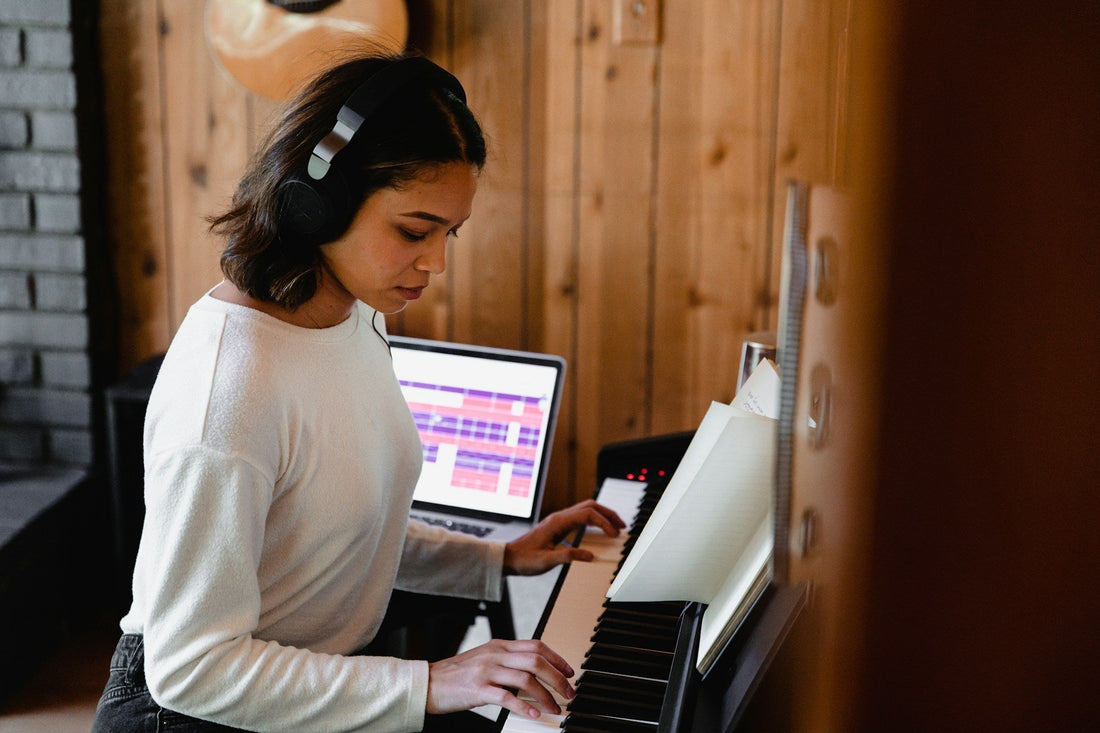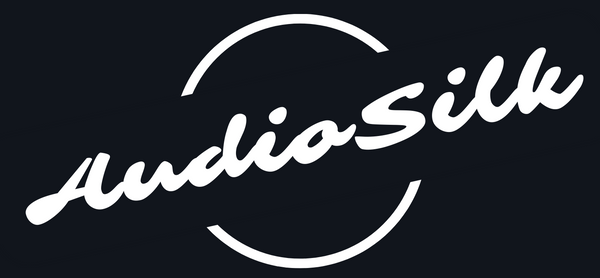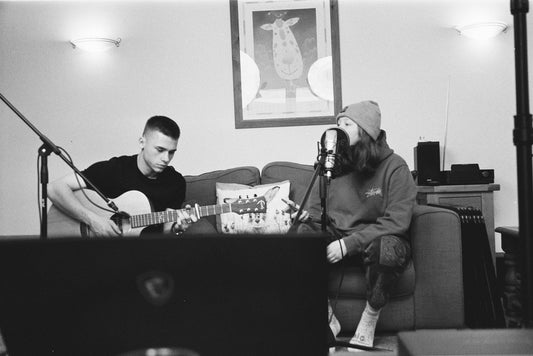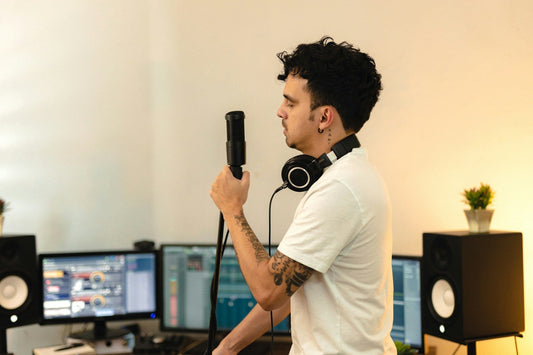
Musician Resume: The Complete Guide for Building Your Music Career
Share
You've spent years perfecting your craft, building your skills, and creating music that genuinely moves people. Your home studio setup is dialed in, your tracks are sounding professional, and you're ready to take your music career to the next level.
But then someone asks for your resume, and you freeze.
Wait—do musicians even need resumes? Aren't we supposed to let our music speak for itself?
While streaming numbers and social media followers dominate the commercial music world, traditional musician resumes still open doors to opportunities that can make or break careers—orchestra positions, teaching jobs, session work, and grant funding.
Thing is, most musicians don't know when they need a formal resume versus when a digital portfolio works better. Worse, those who do create resumes often follow standard job resume rules that completely miss what music industry professionals actually want to see.
This guide details exactly when you need a musician resume, what makes them different from regular resumes, and what sections they must include.
Do you actually need a musician's resume?
 The short answer? It depends entirely on where you're headed in your music career.
The short answer? It depends entirely on where you're headed in your music career.
When you absolutely need a music resume
Classical and orchestral musicians
Major orchestras have rigorous screening processes that can last over a year, and only a small percentange of musicians will actually make it. When you consider that an orchestra can be round 100 performers, and that thousands could apply, you'll begin to see how competitive this is.
Therefore, these positions require formal documentation of your training, performance history, and professional experience in a very specific format.
Music educators
University teaching positions, private school jobs, and even high-level private lesson studios expect detailed resumes highlighting your educational credentials, teaching philosophy, and student achievement metrics.
Music schools like Juilliard and Berklee require comprehensive resumes as part of their application process.
Session musicians
Studios want proof of your reliability, technical skills, and ability to work efficiently under pressure. A well-crafted resume demonstrating your versatility across genres and professional studio experience can be the difference between getting called back and being forgotten.
Grant applications
Organizations like the National Endowment for the Arts demand detailed artist CVs documenting your professional trajectory and artistic achievements.
When you don't need a musican resume
If you're focused on touring, streaming, or building an independent music career, digital portfolios typically work better than traditional resumes.
Venues and promoters care more about your social media following, streaming numbers, and proven ability to draw crowds than your formal training.
Electronic Press Kits (EPKs), combining music samples, photos, and audience metrics, carry more weight in commercial contexts.
The key is understanding which tool serves your specific goals.
Why musician resumes break all the normal rules
Forget everything you know about standard job resumes—musician resumes operate in a completely different universe with their own logic and expectations.
Performance experience trumps work history
While regular resumes emphasize career progression and job responsibilities, musician resumes showcase where you've performed, who you've collaborated with, and what repertoire you've mastered. A single performance with a renowned conductor or at a prestigious venue can outweigh years of routine gigs.
Your educational lineage carries serious weight
In the music world, who you studied with often matters as much as where you studied. Mentioning that you worked with a respected teacher or completed masterclasses with industry legends immediately signals your credibility to other professionals. This concept barely exists in most other fields.
Length rules get thrown out the window
Orchestra auditions demand strictly one-page resumes with no exceptions, while academic positions might require 2-3 page CVs detailing research, publications, and comprehensive performance histories. Session musicians need concise one-pagers highlighting versatility, but classical musicians often maintain separate 2-3 page repertoire lists documenting every major work they've mastered.
Technical skills sections look completely different
Instead of listing software proficiency and project management abilities, musician resumes feature instruments played, sight-reading capabilities, language skills for vocal music, and familiarity with different musical styles or periods.
Formatting expectations vary dramatically by genre
Classical musicians stick to conservative, black-and-white layouts that emphasize substance over style. Contemporary musicians can incorporate more creative design elements, while music business resumes mirror traditional corporate formats but emphasize industry connections and revenue generation.
The bottom line: Musician resumes prioritize artistic achievements, professional relationships, and technical mastery over traditional career metrics.
The 7 sections every musician's resume needs
 Whether you're applying for orchestral positions, teaching jobs, or session work, these sections form the foundation of any strong musician resume.
Whether you're applying for orchestral positions, teaching jobs, or session work, these sections form the foundation of any strong musician resume.
1. Header with musical identity
Your header needs more than just contact information. Include your name, primary instrument or voice type, phone number, email address, and links to your professional website or portfolio. This immediately tells readers what kind of musician you are and how to reach you.
2. Performance experience (the heart of everything)
This section makes or breaks your resume. Organize performances by importance and venue type—solo recitals, orchestral works, chamber music, or contemporary collaborations.
Include venue names, dates, conductors or collaborators, and specific repertoire when relevant.
Quantify your impact wherever possible: "performed for audiences of 500+ at Lincoln Center" carries more weight than simply "performed at Lincoln Center."
3. Education and training
List conservatories, universities, degrees, and significant masterclasses in reverse chronological order. Include graduation dates, degree types, and any academic honors. For classical musicians, this section often determines initial credibility with hiring committees.
4. Teachers and mentors
This uniquely musical section showcases your artistic lineage. List significant private teachers, masterclass instructors, and mentors who shaped your development. In classical music especially, studying with respected teachers immediately signals your training quality.
5. Recordings and discography
Document your recorded work, including albums, singles, featured performances, and any commercial releases. Include record labels, chart positions if applicable, and streaming numbers for contemporary artists. This demonstrates your professional recording experience and commercial viability.
6. Awards and recognition
Showcase competition results, scholarships, grants, and other recognition you've received. Include ranking information (first place, finalist, etc.) and the prestige level of each award. This section provides third-party validation of your abilities.
7. Technical skills and specializations
List additional instruments, software proficiency (Pro Tools, Logic, etc.), language abilities for vocal music, and specialized skills like conducting, arranging, or music production. Contemporary musicians should include relevant technology skills and genre versatility.
What separates professional from amateur musician resumes
 Your resume is your professional passport to opportunities that streaming numbers can't unlock.
Your resume is your professional passport to opportunities that streaming numbers can't unlock.
While TikTok views matter for some gigs, traditional resumes still open doors to teaching positions, orchestral work, session opportunities, and grant funding.
The strategy? Build both traditional and digital presence simultaneously. Maintain multiple resume versions—conservative one-pagers for orchestral auditions, comprehensive CVs for academic positions, metrics-focused documents for commercial collaborations.
But here's what most musicians miss: even perfect credentials won't save you if your demo recordings sound amateur because of poor room acoustics.
Your resume lists your credentials. Your demo recordings prove your talent. Understanding where to place acoustic panels and how to install them properly ensures your audition materials and collaborative projects sound as professional as your resume looks.
Start building your professional presence today
Your musician resume is your professional introduction to career-defining opportunities. Whether targeting orchestra positions, teaching jobs, or session work, the right resume opens doors.
Start with one targeted resume for your most immediate goal. Focus your effort where it can most directly advance your career right now. Your music career deserves professional presentation—both on paper and in every recording you share.
Ready to ensure your recordings match your resume's professionalism? AudioSilk panels make your audition materials and demos sound as polished as your credentials look.
Tag us @audiosilkco when you level up your career.



